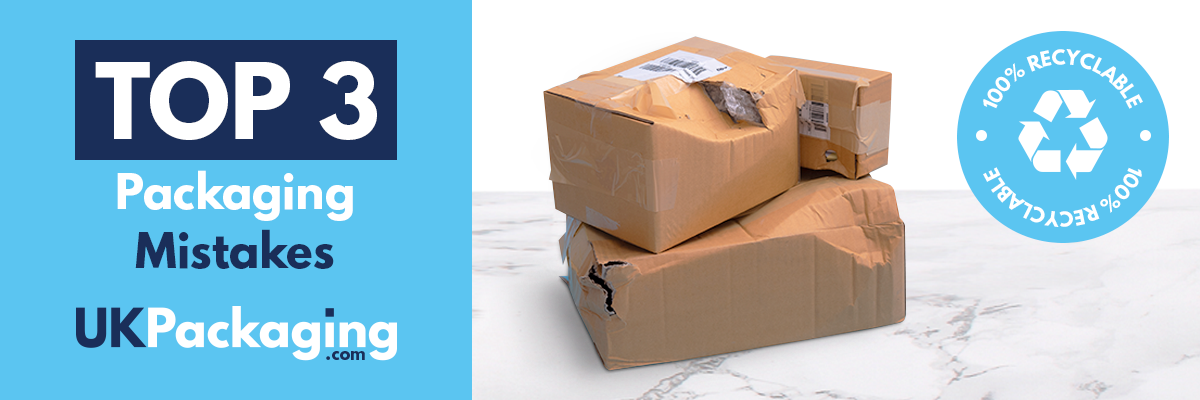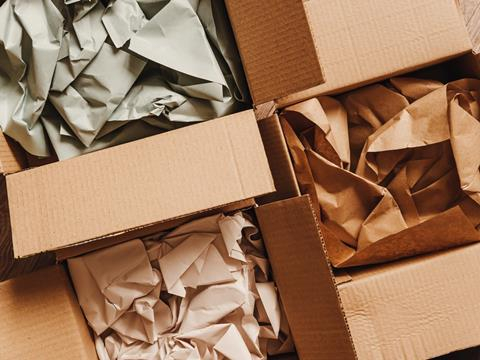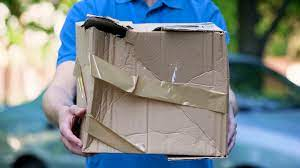Top 3 Packaging Mistakes to Avoid
In the era of Amazon Prime and Same Day Delivery services, there's nothing quite like the anticipation of expecting a delivery. Unfortunately, there is also nothing quite as disappointing as receiving your product in a bad condition or worse, completely unusable. Here are 3 common packaging mistakes to help avoid disappointed customers.

In the era of Amazon Prime and Same Day Delivery services, there's nothing quite like the anticipation of expecting a delivery. Unfortunately, there is also nothing quite as disappointing as receiving your product in a bad condition or worse, completely unusable. Here are 3 common packaging mistakes to help avoid disappointed customers.
-
Overpacking
This is perhaps the most famous example of a packaging mistake, with one of the biggest eCommerce companies worldwide, Amazon, typically falling foul of this, as popularised by Twitter hashtags such as #amazonpackaging.
Overpacking can refer to anything from metres of paper void fill to a sea of packing peanuts, or even excessive boxes in boxes. This level of overpacking not only causes additional frustration to the customer with them needing to dispose of the excess but also reflects badly on the company.
Overpacking your products will add unnecessary costs to your company. If you are using too much additional packaging you're not getting the most out of the materials. It is common that too much packaging can cause built up pressure, damaging products rather than offering the desired protection.
How to avoid this:
- Look at sourcing boxes close in size to your products.
- Use boxes with variable heights this makes it easy to use 1 box for various sized products.
- Ensure each protective packaging component serves a purpose whether that is protective or aesthetic. Test various options to find the perfect combination for your products.

-
Under Protecting
From overpackaging to under protecting a huge mistake businesses make is not finding the right middle ground for their products. By packing a product without enough padding, too tightly to the box, or without any necessary fragile labels, not only will customers be more likely to end up with damaged goods, but the supplier will then be left to either refund or replace them after having already left the customer with a negative receiving experience.
Protecting a package isn’t just about protecting it from the potential for damage in transit, but also protecting the goods inside from the elements to ensure that they are not left with faults due to damage in transit. This is especially important for valuable items such as artwork or electronics. Choose appropriate materials for your products, that can include using foam inserts, air pillows, or paper wrap to provide additional cushioning. It's also important to consider the type of shipping being used, as different modes of transportation can result in different levels of shock and vibration during transit.
How to avoid this:
- Select the correct cardboard boxes for your products, single walled or something more heavy duty for larger items or longer transportation.
- Use edge protection particularly for frames, electronics and furniture.
- Ensure products are correctly labelled with necessary warning labels i.e ‘fragile.
-
Not Choosing Quality Packaging
The packaging you choose is vital for ensuring that your products arrive in one piece. Many companies opt for the cheapest options on the market to cut costs. Although this may look better in the bank, it doesn’t always mean your products are of a high quality and may cost you more in the long run.
Low cost options can often use thinner packaging materials and won’t be reliable enough for ecommerce shipping. Low quality packaging can be easily damaged leaving you facing complaints, replacements and refunds. The same applies for supplementary packaging such as tape and foam protection. If you invest in a low quality tape it may not be appropriate for your package's transportation journey.
How to avoid this;
- Take time to consider a packaging supplier who can give you all you need.
- Ensure you check the quality of the packaging that you are receiving is consistent.
- Consider your product's size, weight and fragility of your packaging accordingly. i.e heavier objects may require a sturdier box like our double walled boxes.



